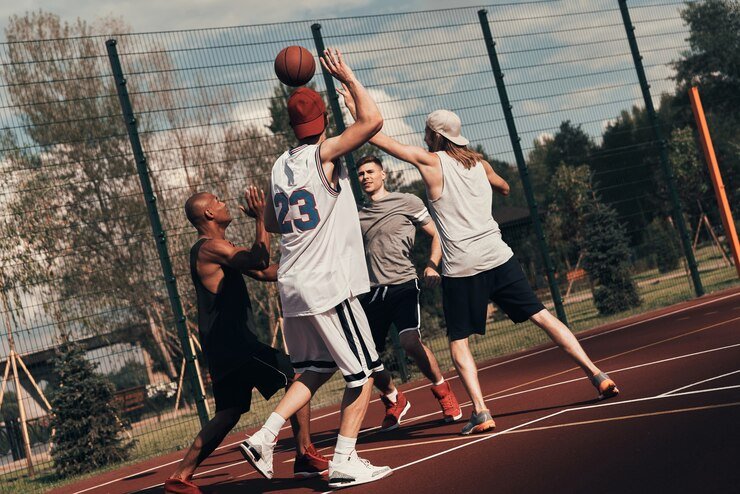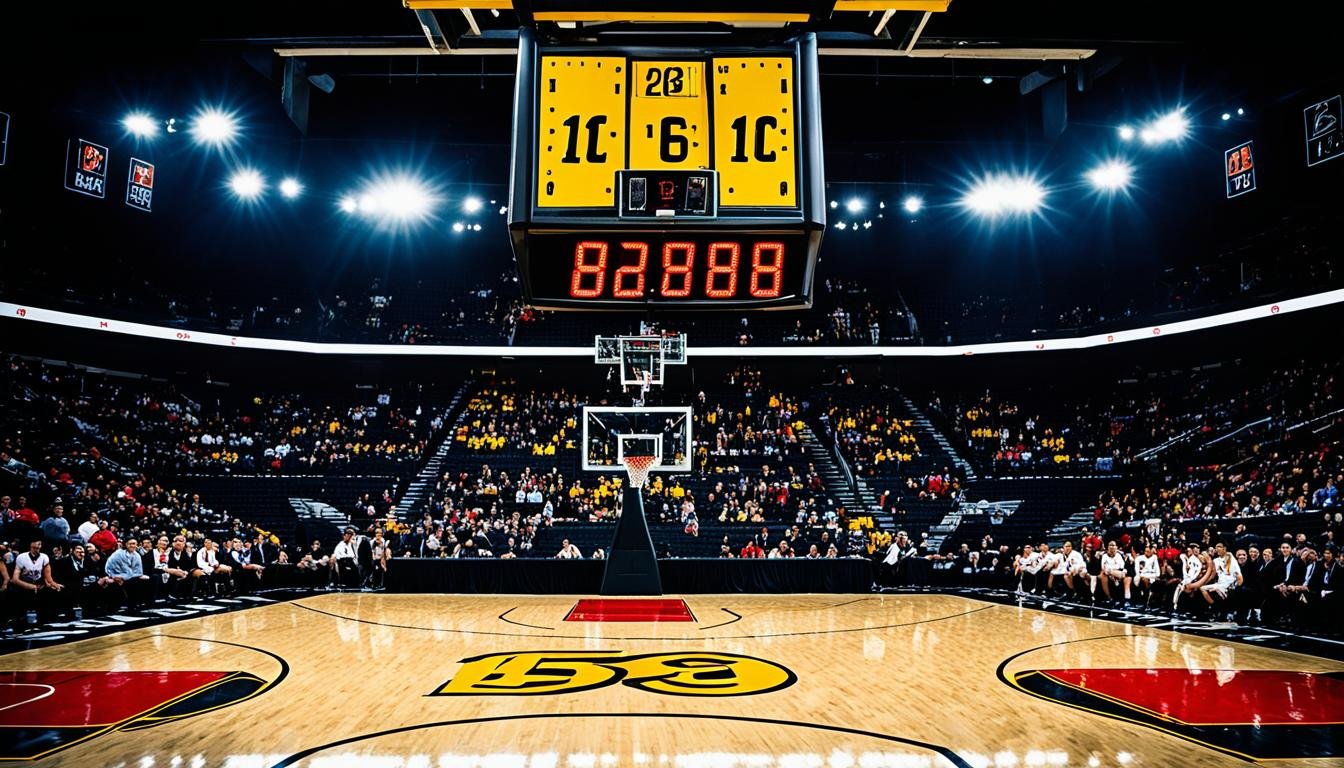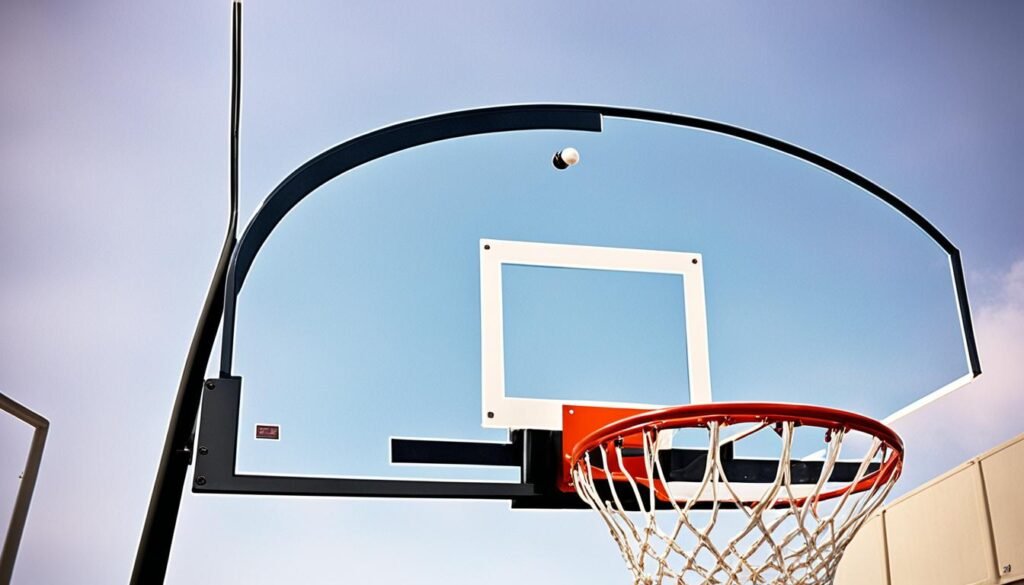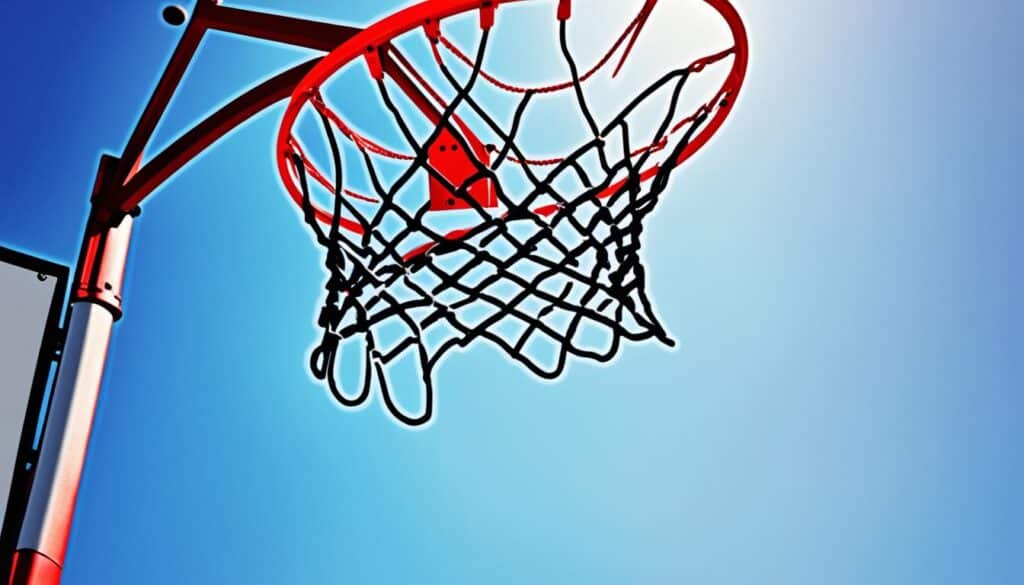Basketball Regulations: basketball, technical fouls are a big part of the game’s rules. These fouls are more than just physical contact. They cover a lot of other bad behaviors that can mess up the game’s fairness and flow. It’s important for players, coaches, refs, and fans to know what technical fouls are and why they matter.
Key Takeaways
- Technical fouls penalize infractions that do not involve physical contact between players
- The most common technical foul is for unsportsmanlike conduct by players, coaches, or even the crowd
- Technical fouls are more severe than personal fouls but less so than flagrant fouls
- Technical fouls result in free throw attempts and possession changes
- Proper understanding and application of technical fouls is crucial for effective game management
Introduction to Technical Fouls
In basketball, a technical foul is a serious rule violation. It helps keep the game fair. Unlike personal fouls, technical fouls don’t need physical contact. They usually involve bad behavior or breaking the rules.
Definition and Significance
A technical foul is given for serious rule breaking. It’s more than a personal foul but less than a fight. It’s often due to disrespecting officials offensive team or playing game of basketball too rough. Technical fouls matter because they give the other team points and offensive player the ball. This can change the game’s outcome and keeps everyone playing fair.
The most common reason for a technical foul is unsportsmanlike behavior. This can be arguing with the ref, using bad language, or making rude gestures. But technical fouls can also be for messing with the game’s flow or the hoop, like having too many players on the court. Basketball officiating involves understanding technical fouls. They give officials power to keep the game under control. Knowing about technical fouls helps everyone involved in the sport understand how the rules protect the game’s fairness. It shows the important work officials do.
Types of Technical Fouls

In basketball, you can get a technical foul for more than just being rude. The basketball regulations list many reasons you might get one. Knowing these can keep the game fair for everyone. One way to get a technical foul is using too many timeouts. Each team can have only so many. Ask for more, and you might get a foul. Another is delay of game. This is when you slow the game down on purpose.
Having the wrong number of players three point is another no-no. This could mean too many players or swapping them out wrongly. Also, don’t hang on the hoop or backboard. Breaking the rules in the coaching area or with your uniform and gear can get you in trouble too. The penalties and steps for each foul are in the basketball rulebook. Refs basketball court watch for these actions and make sure the right two free throws punishments are given. This keeps the game fair and fun.
| Type of Technical Foul | Description | Penalty |
|---|---|---|
| Excessive Timeouts | Requesting more timeouts than allowed | One free throw and possession of the ball |
| Delay of Game | Intentionally preventing the ball from being put into play promptly | One free throw and possession of the ball |
| Incorrect Number of Players | Having too many players on the court or illegal substitutions | One free throw and possession of the ball |
| Basket/Backboard Violations | Deliberately hanging on the basket or backboard | One free throw and possession of the ball |
| Coaching Box Violations | Exceeding the coaching box boundaries or other coaching infractions | One free throw and possession of the ball |
| Uniform and Equipment Issues | Wearing illegal uniforms or using unapproved equipment | One free throw and possession of the ball |
These are just a few examples of technical fouls in basketball. By knowing the rules, two free throws everyone in the game can help make sure it’s played fairly and with two free throws good sportsmanship.
“Basketball is a game of rules, and technical fouls are a crucial part of maintaining the integrity of the sport. It’s important for everyone involved to understand the different types of infractions and their consequences.”
Excessive Timeouts

In basketball, timeouts are important for planning and managing the game. But too three-point many timeouts can cause problems. It can slow down the game and even lead to basketball game penalties. It’s crucial for international basketball everyone involved overtime period to know the rules about using timeouts.
Rules and Penalties
According to the basketball rules, teams can’t ask for more timeouts than they are allowed. If they do, they get a technical foul. So, teams need to be careful about how three-point line they use their timeouts .When a team gets a technical foul for too many timeouts, they take a free throw. Then, the game continues with a throw-in for the other team. But if the timeout was before a free throw or jump ball, the team gets possession after the game restarts.
A technical foul for too many timeouts run with the ball leads to tied at the end a free throw and possession for the college basketball other team. This rule aims to stop teams from taking advantage of player is fouled timeouts. It helps keep the game fair and smooth.
| Violation | Penalty |
|---|---|
| Excessive Timeout | Technical Foul, 1 free throw attempt, possession for opposing team |
Knowing the rules and what happens if you break them is key. It helps coaches, players, and officials keep basketball games fair and enjoyable.
Delay of Game
In basketball, a delay of game technical foul is very important. It’s overtime period when a team or 24 seconds player stops the game from continuing quickly. This ball goes affects how smoothly the game player must goes and its speed.
Causes and Consequences
A delay of game can happen for many reasons. For instance, not giving the ball to touch the basketball the ref after a point, or touching the ball before it’s thrown in.
- Interfering with the ball after a successful field goal or free throw
- Failing to immediately pass the ball to an official
- Touching the ball before a throw-in has been released
- A defender crossing the boundary line on a throw-in
- A team preventing play from commencing
If a team gets a delay of game foul, they get a warning first. But basketball rules and regulations after that, they’ll get a technical foul. This means the other team gets a touch the basketball national basketball association free throw and the ball back.
| Delay of Game Offense | Penalty |
|---|---|
| First Offense | Warning |
| Subsequent Offenses | Technical Foul (1 free throw attempt, ball awarded) |
These rules help to keep the game moving as it should. They make sure the shot clock and throw-ins happen quickly. This stops basketball rules teams from slowing game field goal of basketball down on purpose.
Upholding the delay of game rule keeps basketball fair and fun. It makes sure everyone plays with good sportsmanship and fights fairly.
Incorrect Number of Players
In basketball, the right number of players on the court is key. If a team has more players than allowed during play, a technical foul is given. This foul is not because of bad sportsmanship but for breaking the rules. This foul gives the other team a free throw and the ball. Also, time goes back to when the extra player was in the game. Then, the game restarts with a throw-in from the team that gets the ball.
Surprisingly, having too few players can also lead to a penalty. This is a smart strategy used by some teams. They do this to shake up their opponent’s game or just to have a little advantage for a short time.
| Scenario | Penalty |
|---|---|
| Too many players on the court | Non-unsportsmanlike technical foul, resulting in a free throw and possession for the opposing team |
| Too few players on the court | Technical foul penalty |
By following the basketball rules about the right number of players, teams make sure the game is fair. They avoid getting fouls against them because of this rule.
“Proper player substitution and court management are essential for maintaining the flow and fairness of the game.”
Basket Ring, Backboard or Support Violations

In basketball, there are special rules for the basket ring, backboard, and support. Players aren’t allowed to hang on these parts during the game. Unless it’s to avoid getting hurt, this could mean a technical foul is called.
Penalties and Exceptions
If a player hangs on the basket ring, net, backboard, or support, they face a penalty. This is true for both the team with the ball and the one trying to stop the score. If the one hanging hits the ball, the right amount of points are added, based on the shot.
But, there’s a key exception to this. If someone hangs on the equipment to prevent an injury, they won’t get a technical foul. This exception shows how important safety is in basketball.
- Deliberately hanging on the basket, backboard, or support can result in a non-unsportsmanlike technical foul.
- The penalty applies to both offensive and defensive players.
- If a defensive player touches the ball while hanging, points are awarded based on the shot attempt.
- No technical foul is assessed if a player hangs on the equipment to prevent an injury.
“The safety of the players is of utmost importance, which is why the exception for hanging on the equipment to prevent injury is in place.”
Knowing and following the basketball regulations about the basket, backboard, and support helps players avoid technical fouls. It also keeps the game fair and safe for everyone.
Unsportsmanlike Conduct
In the world of Rules of basketball, technical fouls are given for bad behavior. This goes beyond playing rough. It covers actions that affect the game by player’s, coach’s, or even fan’s actions.
Examples and Repercussions
Some actions that can lead to a technical foul are:
- Disrespectfully talking to a referee
- Using bad language (profanity)
- Taunting an opponent
- A coach stepping out of the coaches box without permission
- Threatening another player without hitting them
The punishment can be tough. If someone gets two technical fouls for bad behavior in one game, they’re out. One foul for a very bad act also means they’re kicked out. In rare cases, if a team’s behavior is really bad, the head coach can also be held responsible.
It’s very important to enforce the rules on bad behavior in basketball. This keeps the game fair and fun. The examples of bad actions and their punishments help everyone in the game to value good sportsmanship and fair play.
Technical Foul Administration
Handling technical fouls right is key in basketball. It keeps the game fair and smooth. When a technical foul happens, everyone involved needs to know how to deal with it.
Procedures and Guidelines
Here’s what happens when a technical foul is called:
- A player shoots the free throw(s) due to the foul. If it happens before the game starts, any of the starting players can shoot them.
- Whether they make the free throw(s) or not, the team which had the ball keeps it.
- The game clock is set back to when the technical foul happened.
- In some cases, an unsportsmanlike technical foul can add to a player’s total fouls. This might force them out of the game.
These steps help the game get back on track quickly. They make sure the rules are enforced in a fair, even way.
“Proper administration of technical fouls is crucial to maintaining game flow and integrity.”
Following these rules lets referees handle technical fouls well. This keeps the game going, making sure possession, free throws, and game clock are right.
Also Read: Basketball Games: What Are The Rules Of Basketball Match?
Conclusion
Basketball rules, especially those about technical fouls, are key to keeping the game fair. Coaches, players, and refs must know these rules well. This knowledge helps everyone do their part to keep the game running smoothly.
Following these rules makes sure everyone plays fair. It also encourages good sportsmanship. Technical fouls help refs keep the game under control.
The basketball community’s commitment to these rules keeps the game exciting and fair. Emphasizing the role of technical fouls shows how basketball teaches great values to players, coaches, and fans. This keeps basketball a favorite tradition in the sports world.
FAQs
Q: What are technical fouls in basketball regulations?
A: Technical fouls in basketball regulations are violations that result in personal or team penalties for unsportsmanlike behavior, such as arguing with officials, excessive taunting, or illegal substitutions.
Q: How do technical fouls impact the score in a basketball game?
A: Technical fouls result in free throws or possession of the ball for the opposing team, which can directly impact the score by giving the opposing team points or possession.
Q: What are some of the rules of basketball related to technical fouls?
A: Technical fouls are governed by rules that vary between different leagues and organizations, but generally, they involve penalties for behavior that goes against the spirit of fair play and sportsmanship.
Q: Is there a shot clock violation associated with technical fouls?
A: While shot clock violations are separate from technical fouls, a technical foul can result in a shot clock violation if the team with possession fails to attempt a shot in the allotted time after the technical foul is assessed.
Q: How have the original rules of basketball addressed technical fouls?
A: The original rules of basketball, created by Dr. James Naismith, did not specifically address technical fouls as they have evolved over time with the development of the sport.
Q: What happens when a technical foul is committed during a free throw attempt?
A: When a technical foul is committed during a free throw attempt, the player shooting the free throw is awarded an additional free throw opportunity, separate from the original free throw attempt.
Q: How do technical fouls contribute to the rules and regulations of basketball?
A: Technical fouls are a key component of the rules and regulations of basketball, ensuring that players conduct themselves in a respectful and sportsmanlike manner on the court.
